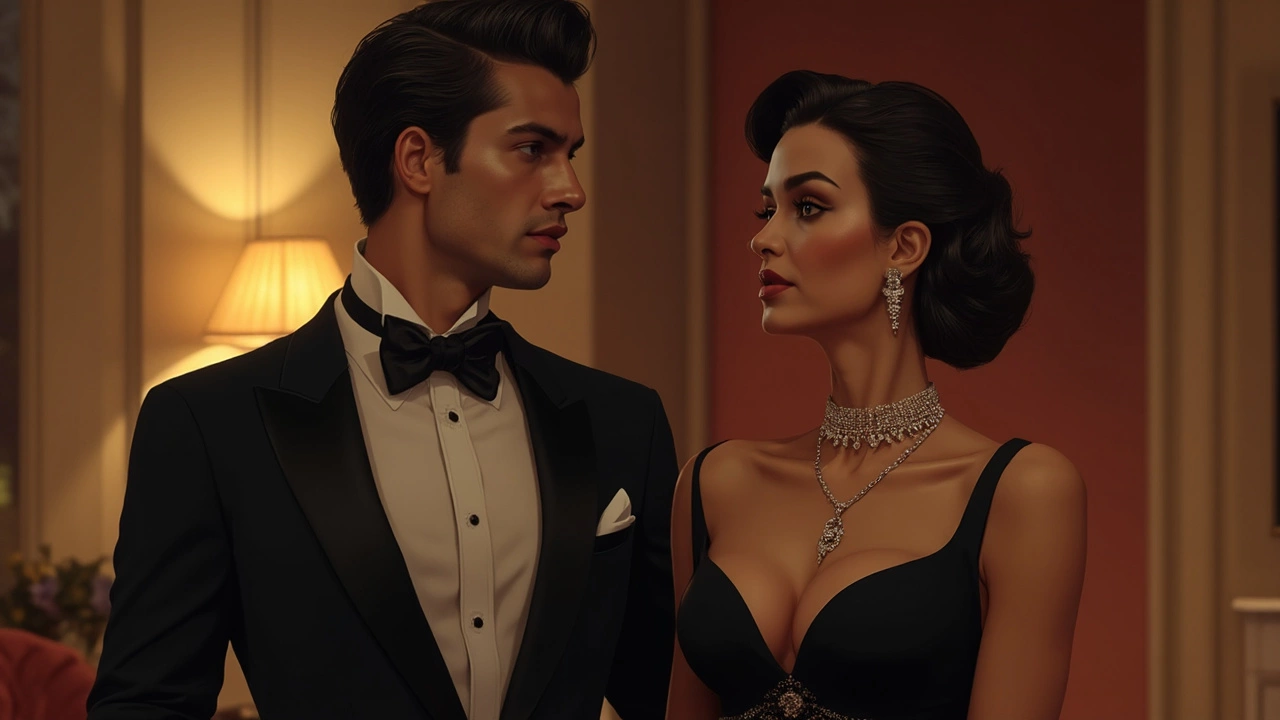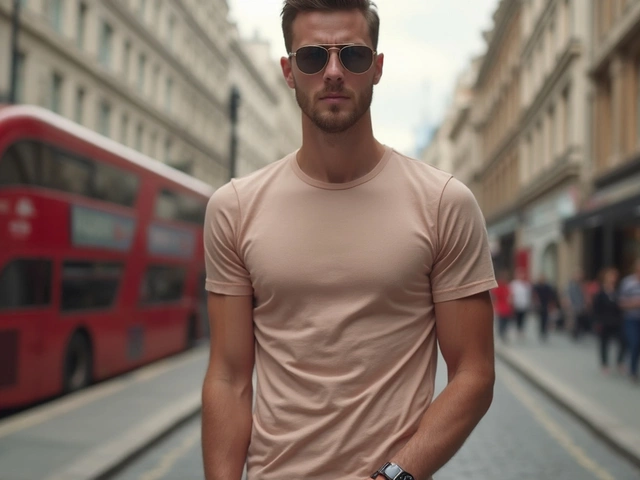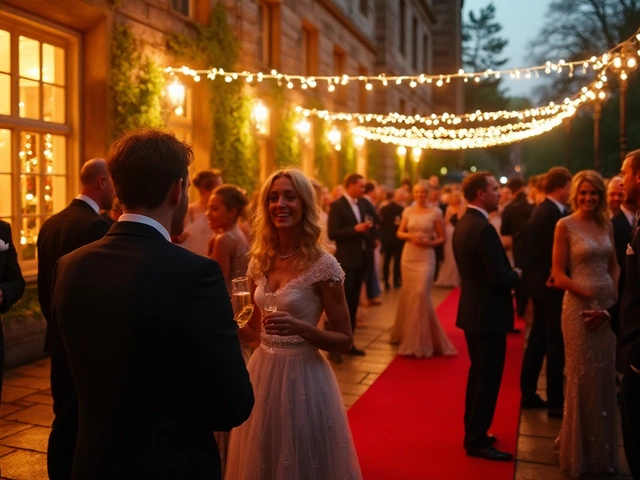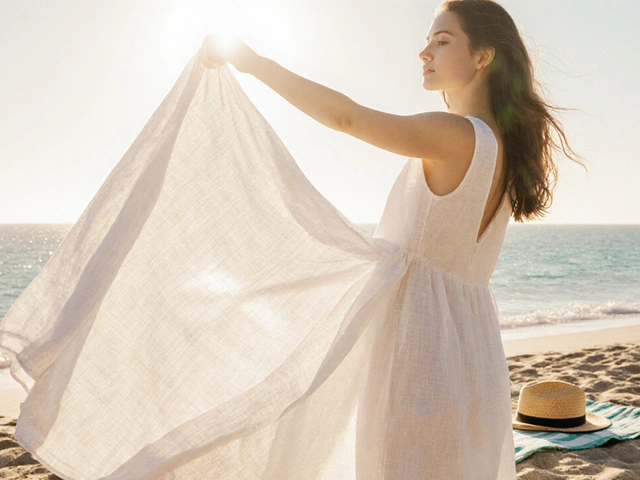Evening wear isn't as daunting as it might seem. Understanding the basics can help you nail that perfect outfit every time. First off, knowing the dress code is half the battle. Whether you're headed to a formal event or a casual dinner, the dress code sets the tone for what you'll wear. Got an invite that mentions 'black-tie'? This usually means tuxedos for guys and full-length gowns for ladies. If it says 'semi-formal,' you can go a bit more relaxed but still polished.
When it comes to picking the right outfit, think about what's comfortable as much as what's trendy. You want to look good, sure, but feeling at ease in your clothes is just as crucial. It's not just about fitting in—it's about feeling confident in what you wear.
- Understanding Dress Codes
- Choosing the Right Outfit
- Accessorizing Smartly
- Seasonal Considerations
- Common Mistakes to Avoid
Understanding Dress Codes
Dress codes can be a bit confusing, but once you get the hang of them, you'll always know what to wear. Let's break down the most common dress codes you might encounter.
Black Tie
This is the most traditional and fancy of all dress codes. For guys, this means wearing a tuxedo with a black bow tie. A white dress shirt and shiny black shoes complete the look. For ladies, think full-length evening gowns. You can go for classic colors like black or navy, or choose something a bit more vibrant.
Black Tie Optional
This one gives you some leeway. Men can wear a tuxedo, but a dark suit with a conservative tie works too. For women, long dresses are still a good choice, but a stylish cocktail dress might also do the trick.
Semi-Formal
The semi-formal code is also known as 'cocktail attire.' Men should go for a suit and tie here, but it doesn't have to be black. Women can choose from cocktail dresses, separates, or even a stylish jumpsuit.
Business Formal
This is often seen at professional events or some weddings. A dark business suit and tie for men is the norm. Ladies can opt for a tailored dress or a smart suit.
Business Casual
Business casual is more relaxed but still tidy. Guys might wear a dress shirt with khakis or slacks. No need for a tie here. Women can pick skirts, slacks, or even a casual dress. Just avoid jeans and sneakers.
Having these rules in mind ensures that you won't show up at an event feeling out of place. And remember, when in doubt, it's always better to be slightly overdressed than underdressed!
Choosing the Right Outfit
Picking the perfect evening outfit isn't just about grabbing something off the rack. It's about making a statement while feeling comfortable and confident. One thing to always consider is the event you're attending. The outfit should match the event's level of formality.
Know Your Body Type
Dress for your body shape. This might sound old-school, but it really makes a difference. If something feels too tight or too loose, it's just not going to work. For example, an A-line dress can be flattering for more body types, giving room to move and a nice flowy look.
Fabrics and Colors Matter
The evening wear tips usually suggest sticking to classic colors like black, navy, or deep reds. These colors rarely go out of style and can easily be accessorized. Don't be afraid to add a pop of color if it's done tastefully. Fabrics like silk and velvet can give an elegant touch to your attire, plus they often feel great against your skin.
"Elegance is the only beauty that never fades," said Audrey Hepburn. So when choosing, lean towards timeless styles over what's trending.
Work with What You Have
If your wardrobe is limited, don't stress. By mixing and matching, you can create fresh outfits with a few staple pieces. Sometimes a simple black dress can be your best friend—dress it up or down with different accessories.
| Color | Occasion Suitability |
|---|---|
| Black | Formal or Semi-Formal |
| White | Somewhat risky—better for daytime |
| Navy | Versatile for most events |
| Bold Colors | Best for less formal events |
Make Room for Personal Style
Your personal flair should always shine through, even in the most strict dress codes. A unique accessory or pop of your favorite color can make your outfit truly yours. Remember, evening dress rules offer guidance, but ultimately, your comfort and confidence are what counts.

Accessorizing Smartly
Let's talk accessories. They might seem like the icing on the cake, but they can really make or break your whole look. The trick is to strike a balance—you don't want to overdo it but don't play it too safe. Use accessories to elevate your evening wear, adding that final touch of polish and personality.
The Basics
When choosing accessories, think about the occasion first. For formal events, a classic black-tie, opt for elegant pieces like a formal evening dress paired with simple, understated jewelry. A set of pearl earrings and a matching bracelet can do wonders. If you’re going for a semi-formal vibe, feel free to add a bit more color and personal flair.
Choosing Jewelry
Jewelry choices are pivotal in pulling your look together. For a chic look, you can never go wrong with diamond studs or a sleek silver necklace. Remember, statement pieces work best when they're the centerpiece, so keep other accessories minimal if you wear them.
Complement your Outfit
The key is to complement your evening wear without overshadowing it. If you're wearing a dress with intricate designs or bold colors, go easy on the accessories. A simple clutch, neutral pumps, and a delicate chain can help your dress stand out.
Don’t Forget the Bag
Let's not leave out the bag! Pick a clutch or a tiny shoulder bag that’s both practical and stylish. You don’t need to carry the kitchen sink, just the essentials. Make sure it pairs well with your shoes or adds a pop of color if your outfit is monochrome.
| Event Type | Suggested Accessories |
|---|---|
| Black-tie | Pearl earrings, classic watch, clutch |
| Semi-formal | Statement necklace, hoop earrings, bold wristlet |
| Casual Dinner | Layered bracelets, crossbody bag, colorful scarf |
Ultimately, accessorizing is about expressing yourself while staying appropriate for the occasion. By choosing wisely, your accessories can make your evening wear sing, bringing your entire ensemble together in a harmonious way.
Seasonal Considerations
When it comes to evening wear, climate can totally change your outfit game. Dressing for winter in Toronto, for example, is a whole other ballgame compared to a summer event. Let's break it down by season.
Winter Formals
In winter, warmth is key. You don't want to be shivering in your evening dress. Opt for thicker fabrics like velvet or wool blends that trap heat. Long sleeves and full-length gowns are not just stylish but practical. Don't forget a chic coat or wrap to cover up when you're outside.
- Go for dark colors; they tend to absorb more heat.
- Pair your gown with thermal tights to keep your legs cozy.
- Avoid thin heels if there's snow or ice; look for sturdier options.
According to some reports, 40% of people attending formal events forget outer garments suitable for winter, leading to a not-so-fun cold evening.
Spring and Fall Events
The transitional seasons offer more flexibility. You can experiment with layers, mixing and matching fabrics. Go for a light cardigan or a stylish blazer that complements your outfit. The weather can be unpredictable, so it’s smart to have a backup plan.
- Opt for neutral or earth tones; they work well for both spring and fall.
- Choose dresses with adjustable layers like removable straps or skirts.
- For shoes, closed-toe pumps are ideal—stylish and warm enough for chilly evenings.
Summer Soirees
Summer is time for lighter, breathable fabrics like cotton or silk. It's all about staying cool while looking hot. Shorter lengths or sleeveless designs often work best, but be sure to consider the formality of the occasion.
- Pick brighter, bold colors that capture the essence of summer.
- Look for dresses with built-in linings that won’t make you sweat.
- Mingle outdoors? Toss on a stylish hat for sun protection.
No matter the season, adjusting your outfit to fit the seasonal considerations not only boosts your comfort but maintains your stylish edge. It’s these little tweaks that make a big difference.
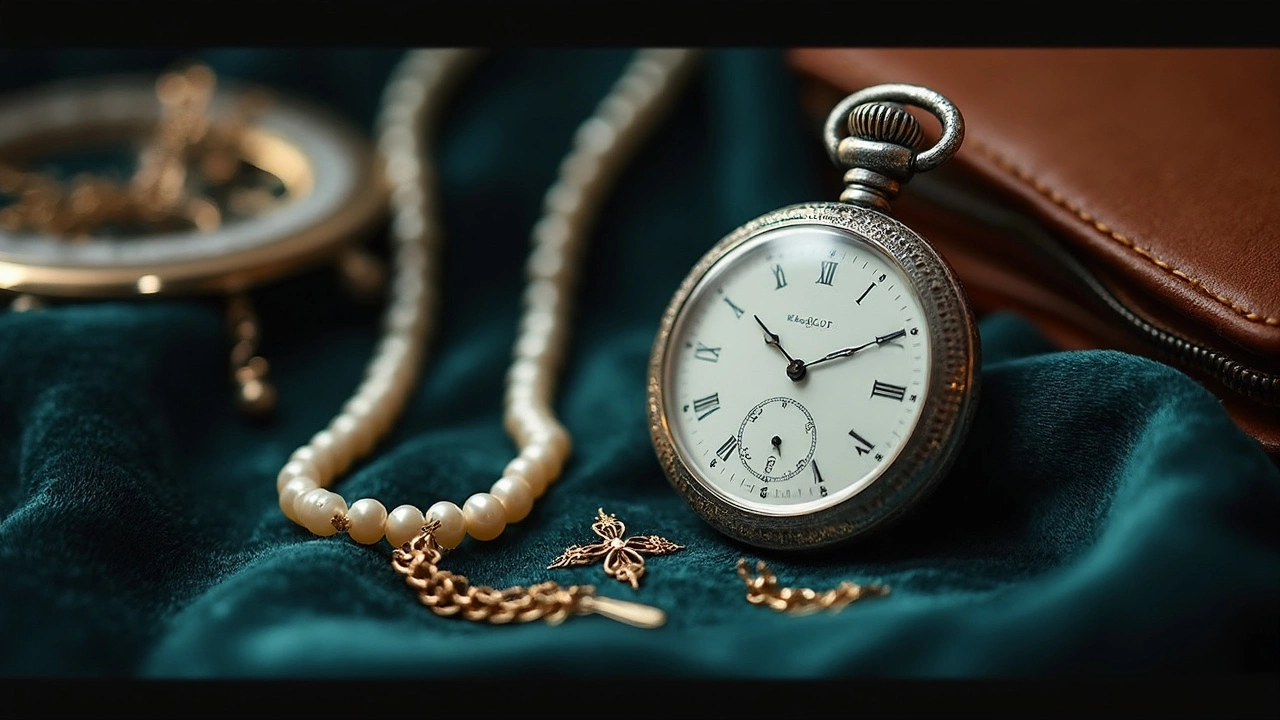
Common Mistakes to Avoid
Nailing the evening wear look is all about getting the details right. Here are a few common pitfalls to steer clear of when planning your outfit.
Ignoring the Dress Code
Think you can wing it? Think again. Misjudging the dress code is one of the most common errors. Whether it says 'black-tie' or 'semi-formal,' take it seriously. The last thing you want is to show up in jeans when everyone else is in tuxedos.
Overdoing Accessories
Accessories can make or break your outfit. It might be tempting to pile on the bling, but less is often more. A simple, elegant piece that complements your evening wear will do the trick without overwhelming your look.
Forgetting the Fit
Even the most stylish piece can look terrible if it doesn't fit right. Baggy clothes might be comfy at home, but for a night out? Not so much. Make sure everything fits you well, whether it's a slight adjustment at the seam or the hem of your gown or suit.
Ignoring Comfort
Evening events often last hours, and if you're uncomfortable, it'll show. Stiff shoes or itchy fabrics can ruin your night. Always prioritize comfort—even with formal attire—so you can enjoy yourself without fidgeting all night.
Underestimating Weather
Especially in places like Toronto, the weather can surprise you. Picking an outfit that's suitable for the season is crucial. No one wants to be shivering in a strapless dress or sweating in a heavy suit. Check the forecast and plan accordingly.
